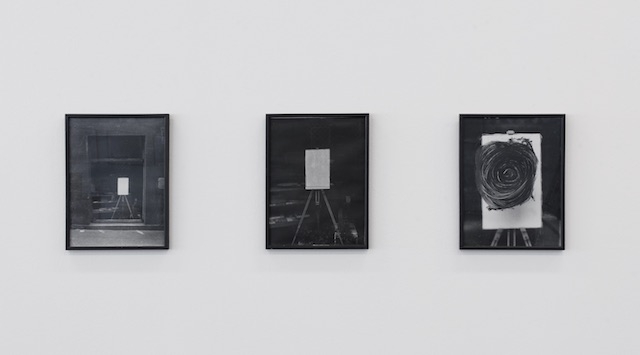Zagreb, 1 July 1972. A man in his mid-twenties works the pavement, carrying out an impromptu poll. Offering passersby voting cards that claim ‘An artist is anyone who is given the opportunity to be one’, he asks them to decide whether ‘Goran Trbuljak’ is an artist. (Trbuljak is the pollster, though virtually nobody would know him.) Out of 500 votes, 259 are positive and 204 negative, and Trbuljak is in theory legitimated; meanwhile, from an elevated vantage, someone takes photographs. In 2006, having created the impish, darkly humorous, endlessly sincere works tabulated in his first retrospective for 22 years, he begins a series of text-driven silkscreen prints. One of them reads: ‘OLD AND DEPRESSIVE ANONYMOUS IS LOOKING FOR A PERMANENT DISPLAY PLACE IN SOME NICE NEW ART MUSEUM SPACE’. In 2008 he makes another text work, again in loud caps, entitled Old and Bald I Search for a Gallery. Trbuljak, for all that his work recalls elusive figures such as David Hammons and Maurizio Cattelan and compares favourably to many first-wave conceptual artists, hasn’t had a starry career. Though if he had, he might not have had any material to work with.
Like Hammons, Trbuljak sometimes elected to work directly on the street or in public space generally, essaying a deliberately minor art. During the early 1970s he photographed a metal pipe that, when struck, produced a different sound to the neighbouring pipes; covered up traffic signs; threw a picture frame into the sea. All these he photographed, and then didn’t show the photos for years. Invited to exhibit in Zagreb’s Student Centre Gallery in 1971, he presented only the work that opens this show: a photographic self-portrait in sensual chiaroscuro, underwritten with the Douglas Huebler-esque phrase ‘I do not wish to show anything new and original’. In 1977, apparently intimidated by an invitation to exhibit at a Venice gallery, he showed enlargements of the gallery’s stellar history of shows (Joan Miró, Alexander Calder, Man Ray, Jean Dubuffet, etc) and temporarily changed the gallery’s name and address on the publicity materials.
Such japes are of course part of a conceptual tradition of dematerialisation, but Trbuljak even managed to get something out of that fact. In 1972, when he had a catalogue published, a friend claimed that everything Trbuljak did had been done by the French artist Ben Vautier, aka Ben. Trbuljak went to Nice and showed Ben the catalogue. The latter annotated it, either denying the duplication or writing ‘same interest’ – and it’s now here as art. Meanwhile, when the wheels came off Conceptualism during the late 1970s and artists turned to painting, he was ahead of them, if not getting any paintings out of it. In 1974, noticing that an art-supply store displayed a blank canvas in its window, he went there on Sundays when the store was shut and painted on the window in front of the white rectangle, photographing the result and annoying the owner, who had to remove the daubs of this ‘Sunday painter’ every Monday morning.
During the 1980s Trbuljak kept at painting, characteristically from a critical distance. Continuing to be hands-off, he pushed paint through the canvas from the back after blocking off areas with sheets of wood. He produced affectless paintings that doubled as tambourines. And he made pseudo-monochromes involving, instead of canvas, lighting gels wrapped around the stretcher bars. All of which could read as coldly smart, but not when nearly everything else here, as curator Andrea Bellini writes in his catalogue essay, ‘strikes the heart’ – not least a series of vitrined sketchpads that, seemingly as a way of closing down his own thoughts, the artist compulsively fills with dots and lines. In 2000 Trbuljak made a letterpress print announcing ‘the 30th Anniversary of Unhappiness in the Art’. For all his puckishness, you wouldn’t doubt his sincerity. The artworld is not an easy place for those who see it as a mechanism for processing artists, a system that is more decisive in creating meaning and significance than are those artists. Trbuljak, endlessly tightrope-walking being here and being gone, evidently can’t see it any other way and wouldn’t want to be anywhere else.
Goran Trbuljak: Before and After Retrospective at Centre d’Art Contemporain, Geneva, 30 May – 19 August
From the September 2018 issue of ArtReview
